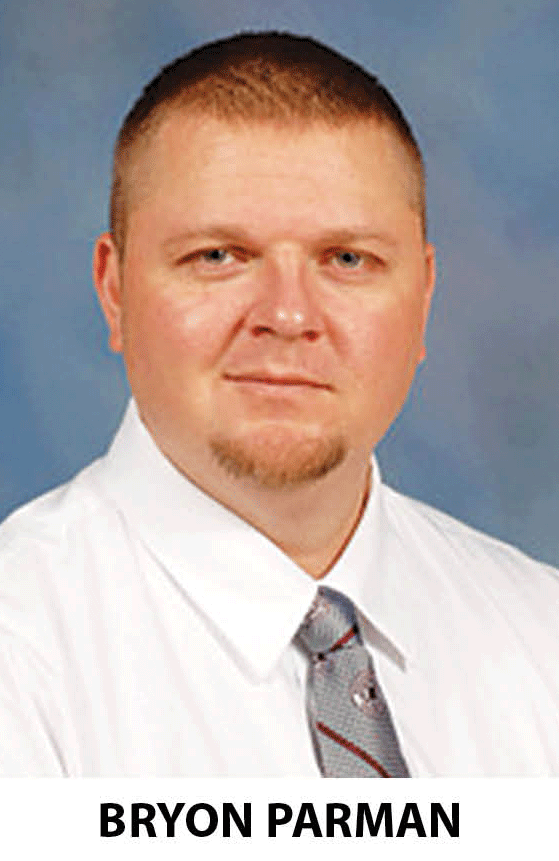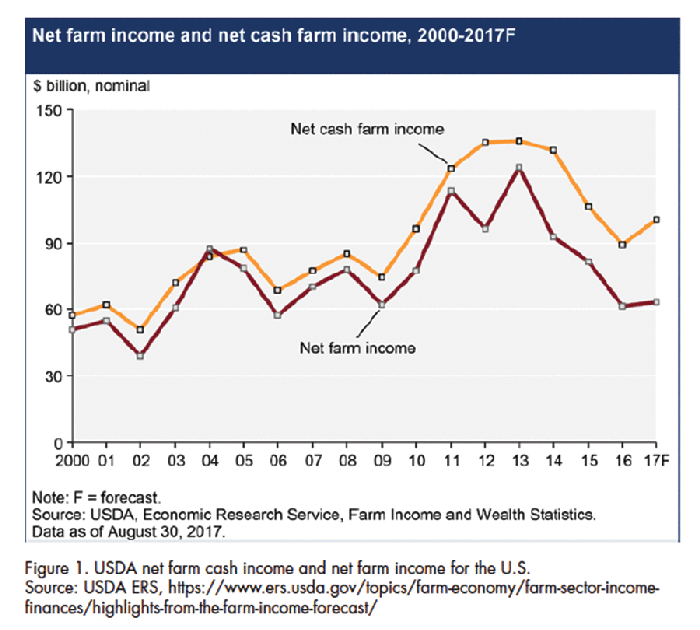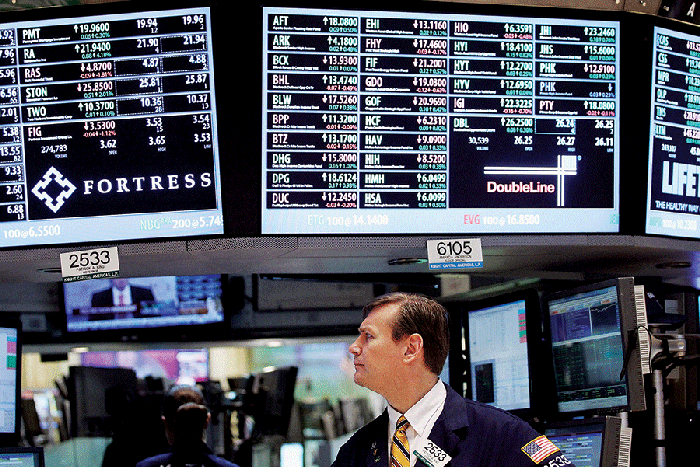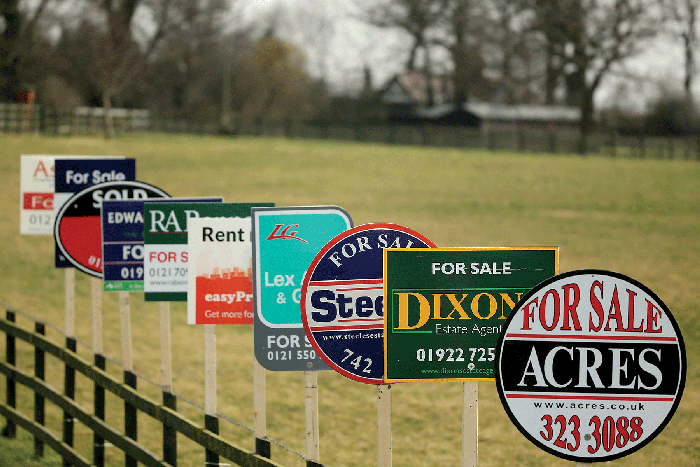
The last three years have seen a worsening of the calculated creditworthiness of many farmer borrowers, says Mississippi State University’s Bryon Parman — this despite loan-to-value rates remaining relatively consistent and overall credit criteria not moving much.
“Much of the operating capital reserves built during the peak of the most recent agricultural cycle have been exhausted as banks and farmers look to equity as a means of collateralizing operating lines,” he says in a new report, Mississippi Agricultural Credit and Lending Conditions 20197, based on a survey conducted in June by the MSU Department of Agricultural Economics and the MSU Extension Service. Participants included agricultural lenders, appraisers, farm managers, and agricultural economists.
“New equipment purchases now require more operator cash input or other forms of collateralization, compared to four years ago when the equipment itself was collateral enough.” In other instances, he notes, where lenders “are apprehensive about offering a full complement of operating capital to some clients, agricultural input dealers are offering various forms of financing to cover the deficit.”
Aside from the downturn in commodity prices, Parman says, “perhaps the most important issue moving forward is interest rates, especially given the number of farms unable to cover operating costs over the last couple of years. Historically low interest rates have been a bright spot for producers needing borrowed funds to operate in this climate of relatively high costs and low commodity prices.”
The presumption, he says, is that interest rates will continue to increase in the years ahead, as macroeconomic conditions in the U.S. improve outside of agriculture. “An increase in interest rates would make the financing many producers are counting on more expensive — and would likely push some farmers over the fiscal cliff, with liquidation the only alternative remaining.”
With equity returns being so low, “a large enough percentage of farmers choosing asset liquidation at the same time would sharply drive down land and equipment values.”
For the time being, Parman says, funding continues to be available for those who need it, and “farmers and lenders have managed to work together in a difficult agricultural economic climate. But a continuation of low commodity prices, or a swift upward movement in interest rates, could push many producers past their financial breaking point.”
In its February report on U.S. Farm Economic Conditions, the USDA noted “mixed measures” for farm profitability heading into the spring planting period. After hitting record highs in 2013, net cash farm income was forecast to increase by just 1.7 percent, while net farm income was projected to drop by 8.7 percent, “implying, for the most part, continued weakness in the U.S. agricultural economy.”
Commodity price outlooks don’t indicate an increase in prices over the next four years, and the baseline update for U.S. agricultural markets from the Missouri Food and Agricultural Policy Research Institute (FAPRI) projects most major U.S. agricultural commodity prices will remain flat through the next five years.
Comments from the Kansas City Federal Reserve Bank Credit Conditions Survey indicate more FSA-guaranteed loans and more secondary market conventional real estate loans for restructuring debt. With equipment values down as much as 66 percent in some regions of the country, the report notes, “Some lenders are beginning to look at land as an alternative for collateral on new loans, and in other cases, farmers are using alternative lenders, such as equipment dealers, seed dealers, and fertilizer dealers to help carry operating costs and cover gaps in operating capital.” As an example, at the end of fiscal 2016, John Deere held loans and leases totaling $34.7 billion.
Within the Delta states region (Arkansas, Mississippi, Louisiana, and west Tennessee), the St. Louis Federal Reserve survey showed demand for loans was lower in the second quarter of 2017 than during the same period in 2016. Even so, loan demand was still well above 2014 and 2015 levels. Loan repayment rates in 2017 were running higher than in 2015, but were still much lower than in years before 2015. “However, some may have difficulty securing financing because funds availability region-wide is down through the middle of 2017, compared to the previous year.”
Regionally, the 8th Federal Reserve District reported variable and fixed interest rates for operating, intermediate term, and long term real estate loans as mostly flat through the first half of 2017. Compared to 2016, these fixed rates were up as much as 0.2 percent, while variable rates were mostly unchanged district-wide.
The Mississippi Extension survey asked lenders their expectation for interest rates over the next 12 months; 90 percent of those responding said they expect rates to climb, while 10 percent said they look for no change in rates across the state.
Across Mississippi, Parman says, surveys showed fixed interest rates lower than those of the 8th District; short term and intermediate term loans were 1 percent lower (4.70 percent vs. 5.73 percent for short term; 4.85 percent vs. 5.86 percent for intermediate term); and long term loans were almost 0.3 percent lower (5.10 percent vs. 5.43 percent). Variable rates were the same across typical term lengths, at 4.55 percent, much lower than those reported across the 8th District (5.39 percent short term; 5.48 percent intermediate term; 5.18 percent long term).
The biggest change in fixed interest rates across Mississippi was in long term or real estate-type loans. The 2016 survey reported an average fixed rate on real estate loans of 4.61 percent; for the same period in 2017 the rate was nearly 0.8 percent higher. Rates for the other two loan types were mostly unchanged, whereas the 2016 short term fixed rate was 4.6 percent and the intermediate length fixed rate was 4.7 percent. Variable rates edged slightly upward, from 4.37 percent in 2016 to 4.55 percent in 2017.
The Mississippi Extension survey asked lenders their expectation for interest rates over the next 12 months; 90 percent of those responding said they expect rates to climb, while 10 percent said they look for no change in rates across the state.
"Equity in the form of less liquid land or machinery means farmers must either borrow against those assets or sell to meet future repayment obligations when costs exceed revenues. Nationally, as the equipment market has soured over the last two years, lenders have moved to farmland rather than equipment to collateralize debt.”
Loan-to-value (LTV) rates for 2017 loans averaged 74 percent for land/real estate loans; 73 percent for medium term machinery-type loans, and 67 percent for cattle and livestock loans. The loan-to-value rate is the principal percentage of new purchases that lenders are willing to finance. The higher the percentage, the more risk the lender is taking on. High LTVs indicate lender optimism regarding repayment or asset appreciation. The LTV rates for 2017 loans were down from those in the 2016 survey, and were down for long term and intermediate term loans in 2105. LTV rates for land averaged 79 percent and machinery 75.6 percent.
“It appears, given the stability of LTVs over the last two years, that lenders and creditors are waiting on conditions to change,” Parman says. “As asset values have remained flat in the Mid-South region over the last two years, lender pessimism on farmland appears to have eased some, or at least many are waiting to see a sign of whether or not they should adjust to require more equity up front.”

“As asset values have remained flat in the Mid-South region over the last two years, lender pessimism on farmland appears to have eased some, or at least many are waiting to see a sign of whether or not they should adjust to require more equity up front.”
Recent high farmland values and cash purchases for agricultural assets “have led to favorable debt-to-asset ratios for farmers over the last 10 years,” he notes. “But, equity in the form of less liquid land or machinery means farmers must either borrow against those assets or sell to meet future repayment obligations when costs exceed revenues. Nationally, as the equipment market has soured over the last two years, lenders have moved to farmland rather than equipment to collateralize debt.”
The MSU Extension survey asked lenders the percentage of borrower operating capital. Lenders across the state reported that, on average, 86 percent of farmers had less than one year’s operating capital available to meet financial obligations, and 14 percent had one year to two years of operating capital. Compared to the previous year’s survey, in which 63 percent of farmers had less than a year of operating capital and 27 percent had one to two years, “this suggests more farmers have burned through their operating capital reserves built up during the period of higher farm revenues.”
Lenders across the state reported that, on average, 86 percent of farmers had less than one year’s operating capital available to meet financial obligations, and 14 percent had one year to two years of operating capital.
The survey also asked the percentage of 2016 operating loans requiring that a significant portion be carried over into 2017, as well as the change in the number of distressed agricultural loans relative to 2016. Respondents reported a range of 2016/17 loan carryover from 18 percent to 70 percent of operating expenses for various farming enterprises. The overall average rate of carryover across the state was nearly 18 percent.
Also, 45 percent of lenders reported an increase in distressed loans from the previous, while another 45 percent indicated no change, and 10 percent reported a reduction (though some of the improvement was a result of liquidation of distressed assets).
The return on equity was negative for all agriculture-specific land across Mississippi, particularly pastureland, where rents do not overcome the relatively high sales price. “Equity returns have become particularly poor, as land sales values remain sticky, while rents have fallen,” Parman says. “This is despite favorable interest rates for borrowers across the country.”
With the exception of pastureland, the rents required for a return on investment of zero “were common before 2014, when commodity prices began to fall. But an increase in the interest rates of prime borrower would make return on investment much worse, as more money would be required to serve any long term debts.”
Assumptions used to calculate return on investment were a 20-year loan, with a 25 percent down payment, and cash rents and sales values from MSU Extension Publication 3118. “Return on investment calculations are often used to determine expected returns for an income generating property without considering the future resale value,” Parman notes. “Resale value is excluded, as it is a relative calculation for asset performance. The equity returns assume that the purchase was made this year, at the sale prices and rental rates given.”
For Delta irrigated land, the return on investment was a negative 8.3 percent; for Delta non-irrigated land, a negative 10 percent; for non-Delta irrigated land, a negative 7.3 percent; for non-Delta non-irrigated land, a negative 12 percent; and for pastureland, a negative 19 percent.
See the report at http://bit.ly/2wBJL0y
About the Author(s)
You May Also Like




